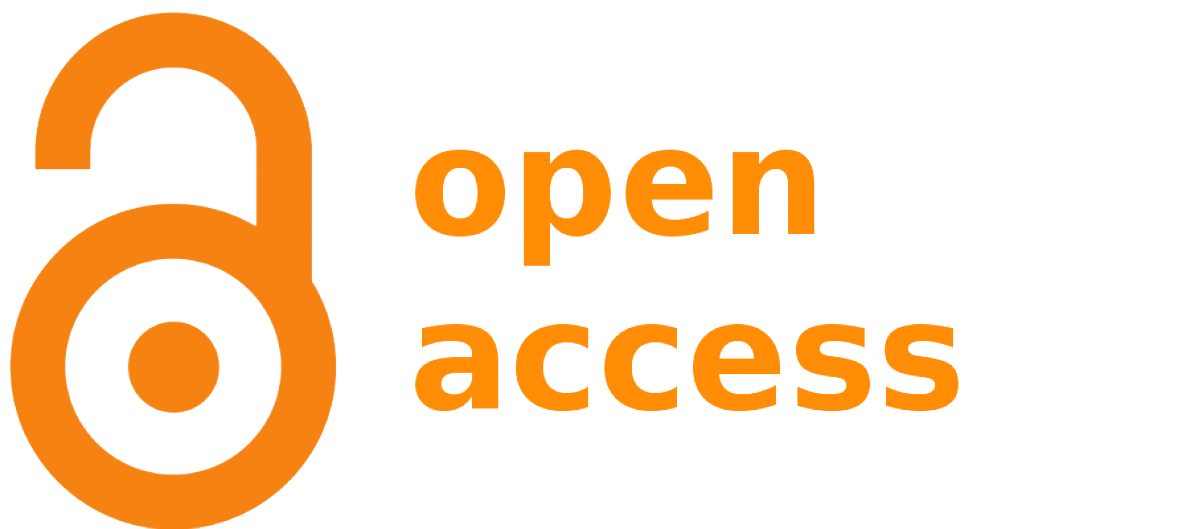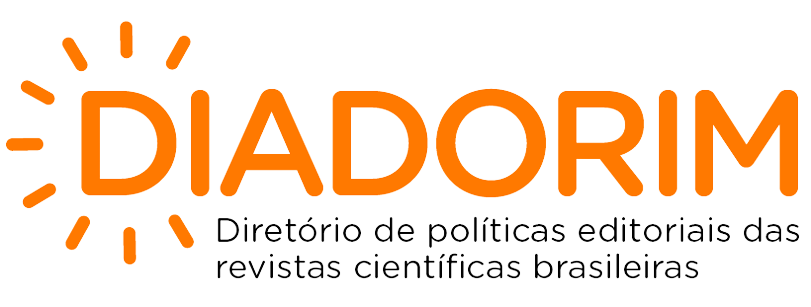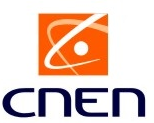
Submissions
Submission Preparation Checklist
As part of the submission process, authors are required to check off their submission's compliance with all of the following items, and submissions may be returned to authors that do not adhere to these guidelines.-
Documents for online submission
- Cover letter.
- Declaration of Responsibility, Transfer of Copyright and Conflicts of Interest signed by all authors.
- Approval of the Research Ethics Committee, when applicable.
- li>Checklist completed according to the section to which the article is intended.
- Title Page (Title Page), in WORD format.
- Main Document (Main Document), in WORD format.
Author Guidelines
1. EDITORIAL POLICY (Update Jan/2024)
Advances in Nursing _ and Health (ANH) is an open access journal whose mission is to publish results of scientific research in the area of health, contributing to the advancement of national and international science, in addition to preparing human resources for scientific publishing.
It has an electronic format and publishes unpublished articles, in the categories: Original Article, Systematic/Scope/Integrative Review, Experience Report, Reflection, Editorial and Letter to the Editor, available in English and Portuguese. Special issues are published at the discretion of the Board of Editors.
The journal adopts peer review in order to guarantee the confidentiality of data from authors and evaluators. Follows the rules of the Uniform Requirements for manuscripts submitted to biomedical journals (Vancouver Style), for more information visit: http://www.icmje.org/recommendations / .
Articles must be submitted exclusively to ANH, concomitant submission to other journals is not permitted. The magazine uses tools to check similarity and plagiarism in texts.
1.1 Declarations on Ethics and Comprehensiveness of Research
All articles submitted to the journal must follow ethical precepts, and it is mandatory to send a copy of the approval of the Ethics Committee for research involving human beings and the approval of the Ethics Committee for the use of Animals, when dealing with research involving animals. Experimental or theoretical research, carried out with Brazilian genetic heritage, must be registered in the National System for Management of Genetic Heritage and Associated Traditional Knowledge ( SisGen ).
The magazine adopts the code of ethical conduct described by the Committee on Publication Ethics (COPE) ( http://publicationethics.org ) and Good Code Publishing Practices of Conduct and Best Practice Guidelines for Journal Editors (http://publicationethics.org/resources/code-conduct ). Clinical Trials must present the linical trial approval registration number ( http:// http://www.ensaiosclinicos.gov.br/ ).
1.2 Copyright Statement
Authors maintain copyright and grant the magazine the right of first publication, with the work simultaneously licensed under the Creative Commons Attribution License that allows sharing of the work with acknowledgment of authorship and initial publication in this magazine.
1.3 Conflicts of Interest
ANH requires all manuscript authors to disclose any possible sources of conflict of interest. Any financial, personal, religious, political or other interests that may influence an author's impartiality are considered potential sources of conflict of interest. These potential sources include, but are not limited to, holding patents or shares, serving on company boards or committees, as well as consulting or obtaining speaker fees from companies. The existence of a conflict of interest does not prevent publication. If authors do not have any conflict of interest to declare, they must inform this when submitting the manuscript, in a letter sent to the editor. It is the responsibility of the corresponding author to verify this policy with all co-authors.
Authors must be aware of the concept of authorship adopted by the journal, assign the article's property rights to ANH, and inform any potential conflict of interest. ANH uses the Creative Commons License – CC BY License ( http://creativecommons.org/licenses ), version 4.0, which allows others to distribute, remix, adapt and create from your work, even for commercial purposes, as long as they give due credit for the original creation to the author and giving due publication credits to this magazine.
Specifications regarding the individual contributions of each author in preparing the article in accordance with the International authorship criteria Committee of Medical Journal Editors , which determines that recognition of authorship must be based on the substantial contribution related to the following aspects: Conception and design or analysis and interpretation of data; Writing of the article or relevant critical review of the intellectual content; Final approval of the version to be published. These three conditions must be fully met.
These specifications will be met by filling out the Declaration of Responsibility, Transfer of Copyright, Contribution of Authorship and Conflicts of Interest form , according to the template provided by the magazine.
1.4 Use of Artificial Intelligence
Authors should use generative artificial intelligence (AI) and AI-assisted technologies only to improve readability and language. The application of technology must be done with human supervision and control, and authors must carefully review and edit the result, as AI may generate an idea that may be incorrect, incomplete, or biased. AI and AI-assisted technologies should not be listed as an author or co-author, nor be cited. Authorship implies responsibilities and tasks that can only be assigned and performed by humans.
Authors must disclose in their manuscript the use of AI and AI-assisted technologies in the writing process by following the instructions below. A statement will appear in the published work. Please note that the authors are responsible for the content of the work.
Disclosure Instructions: Authors must disclose the use of generative AI and AI-assisted technologies in the writing process by adding a statement at the end of their manuscript in the main manuscript file, before the list of references. The statement should be placed in a new section titled 'Statement of Generative AI and AI-Assisted Technologies in the Writing Process'.
Declaration: During the preparation of this work, the author(s) used [TOOL/SERVICE NAME] for [REASON]. After using this tool/service, the author(s) have reviewed and edited the content as necessary and take full responsibility for the content of the publication. This statement does not apply to the use of basic tools for checking grammar, spelling, references, etc. If there is nothing to disclose, there is no need to add a statement.
1.5 Privacy Policy
The names and addresses provided in this magazine will be used exclusively for the services provided by this publication, and will not be made available for other purposes or to third parties.
2. MANUSCRIPTS EVALUATION PROCESS
The Chief Scientific Editor carries out the first evaluation of the manuscript, aiming to assess its contribution to scientific advancement and the construction of evidence for professional practice, the theoretical, methodological and structural quality of the text and its suitability for the journal's editorial policy. Once approved in the pre-analysis , it is directed to an associate editor who is a member of the journal's Editorial Board, who will forward it to the scientific article reviewers for peer review.
According to the considerations of the referees and Associate Editor, the Chief Scientific Editor will decide whether to Approval, Refuse or Reformulate the article.
3. CATEGORY OF MANUSCRIPTS
- Editorial : text that addresses a topic of interest to the scientific nursing and health community. The maximum length must be two (2) pages and may include up to two (2) references, when necessary.
- Letters to the editor : These include letters that aim to discuss articles recently published by the journal or report original research and significant scientific findings. They will be evaluated by the magazine's editors for publication. It must have a maximum of one (1) page.
- Original article : original and unpublished research, innovative for the science and practice of nursing and health. ANH does not publish articles that are part of theses or dissertations. They must have a maximum of fifteen (18) pages, including summaries, tables, charts, references and have up to thirty (30) references. ANH does not publish articles that are part of theses or dissertations.
- Review article : research that presents scientific evidence in an integrated and systematic way, in order to contribute to the advancement of knowledge on the topic investigated. The methods of systematic review (with or without meta-analysis ), scoping review and integrative review will be accepted. The ANH does not publish a review protocol. It may have up to twenty (20) pages, including summaries, tables, table and references and may have up to fifty (50) references.
- Experience report : study that describes a practical situation (teaching, assistance, research or management), intervention and evaluation strategies, of interest for professional performance. It must contain a maximum of fifteen (15) pages, including abstracts and references.
- Reflection: study that is based on a philosophical theoretical basis, as well as the authors' perception regarding the subject addressed. It must contain a maximum of fifteen (15) pages, including abstracts and references. Present the minimum structure of: summary, introduction, development, final considerations and references.
4. MANUSCRIPT PROCESSING FEE
|
Rate |
Value |
|
Submission |
Free |
|
Publication |
R$ 600.00 (six hundred reais)* |
* Payment must be made at the time of acceptance of the manuscript for publication.
TranslationsIt is reviews :
After approval of the article for publication, authors will be asked to provide translations of the text into two additional languages (English and Spanish). The costs of translations and revisions are the responsibility of the authors, who must choose companies accredited by the journal, which will provide the article's translation certificate.
5. DOCUMENTS FOR ONLINE SUBMISSION
Cover letter: the author must explain to the Editor why their article should be published in ANH and what contribution it makes to the knowledge of the results presented in the article and their practical applicability. Download the sample HERE.
Declaration of Responsibility, Transfer of Copyright, Authorship Contribution and Conflicts of Interest: authors must be aware of the concept of authorship adopted by the journal, the specifications regarding the individual contributions of each author in preparing the article according to the authorship criteria from International Committee of Medical Journal Editors . Assign the patrimonial rights of the article to ANH, inform any potential conflict of interest, including political and/or financial interests associated with patents or property, provision of materials and/or inputs and equipment used in the study by the manufacturers, signed by all authors as per Template. Download the sample HERE.
Approval opinion from the Research Ethics Committee Involving Human Beings: research involving human beings developed in Brazil, according to chapter XII.2 of Res. CNS 466/2012, must present documentation proving approval of the project by the Research Ethics Committee (CEP) and/or National Research Council (CONEP) , When it's the case. Research involving human beings carried out in other countries must present local ethical documentation.
Genetic Heritage Registration Declaration: experimental or theoretical research, carried out with Brazilian genetic heritage, must comply with SECEX/CGEN Ordinance nº 1 of 2017, and present documentation proving registration in the National System for Management of Genetic Heritage and Associated Traditional Knowledge (SisGen ) .
Title Page: in WORD format, presenting the original title of the manuscript, summary title, full name without abbreviations of the authors followed by the information: Institution, City, State, Country, Email, ORCID. Download the sample HERE.
Main Document (Main Document): manuscript in WORD format, according to detailed instructions in the rules and instructions for submitting manuscripts. Download the sample HERE.
Checklist for verification/submission of manuscripts: duly completed checklist of the manuscript category made available by the journal.
Supplementary Documents : in this field, authors may attach other documents they consider relevant or complementary to the manuscript. If they used instruments validated by other researchers, they must attach a document that proves the authors' authorization for their use.
6. RULES AND INSTRUCTIONS FOR SUBMISSION OF MANUSCRIPTS
Equator Network guides , according to the type of research:
- All articles must follow the Revised Standards for Quality guide Improvement Reporting Excellence (SQUIRE 2.0) – (checklist).
- Randomized clinical trial – CONSORT (checklist and flowchart).
- Systematic reviews and meta-analyses – PRISMA (checklist and flowchart).
- Observational studies in epidemiology – STROBE (checklist).
- Qualitative studies – COREQ (checklist).
The EQUATOR Network provides a table with guides for various types of studies and their respective links ( http://www.equator-network.org/library/resources-in-portuguese-recursos-em-portugues/ ).
ReBEC ) database . For cases prior to the publication date of RDC 36, of June 27, 2012 of the Health Surveillance Agency, or for studies developed in other countries, proof of registration on other International Clinical Trials platforms will be accepted . Registration Platform (ICTRP/OMS).
Articles that present partial or complete results of experimental or theoretical research, carried out with Brazilian genetic heritage, must present proof of registration in the National System for Management of Genetic Heritage and Associated Traditional Knowledge (SisGen ) .
6.1 Manuscript preparation
ANH magazine adopts the “Uniform Requirements” ( Vancouver Style ) publishing standards.
Articles will be accepted in Portuguese, English and Spanish.
6.2 Article structure
Articles must contain the topics of introduction, method, results, discussion and conclusion, subsections are not permitted. Follow the rules described below:
6.2.1 Title Page
- The title of the manuscript with a maximum of 15 words and presented in the language of the article. And a summary title with a maximum of 7 words.
- Do not use capital letters in the title.
- The full names and without abbreviations of a maximum of six authors and information on Institution, City, State, Country, Email, ORCID (required).
- Section for which the manuscript is intended.
- Indication of the full name of the corresponding Author, Full Address. City, State, Country. Email.
- The Title Page must be inserted in a separate file from the Main Document.
6.2.2 Main Document
- It must contain the title, the abstract with descriptors and the body of the manuscript (do not include any identification of the authors).
- Only in the article language.
- File in Word format (. doc or . docx or . rtf ).
- Page layout: A4 size, with dimensions 21 cm X 29.7 cm or 8.3” X 11.7”. Top, bottom and side margins of 2.5 cm (1”) and paragraphs of 1.25 cm.
- Times New Roman 12 font throughout the text and 11 font in tables, figures and graphs.
- Spacing 1.5 cm between lines from the title to the references, except in the abstract and where single spacing must be used.
- If highlights are necessary throughout the text, use the Italics feature. Words in bold, underlined, capital letters and other markers will not be accepted in the body of the file.
- Section titles must be written in Bold in capital letters.
- At the end of the text, thanks and/or financial support for the development of the research must be provided.
Title: maximum 15 words and presented only in the language in which the article is submitted. Use bold and capital letters. Disallowed items: abbreviations, acronyms and geographic location of the search.
Summary: must be presented in the same language as the manuscript with a maximum of 250 words. Justified, single spaced, in a single paragraph and without indents. Structured format: Objective; Methods; Results; and Conclusion. Clinical Trials must present the clinical trial registration number at the end of the summary. Experimental or theoretical research, carried out with Brazilian genetic heritage, must present the SisGen registration number . Items not permitted: acronyms, except those recognized internationally; author quotes.
Descriptors: present three to six descriptors, selected from the Medical Subject list Headings ( MeSH ) or vocabulary Health Sciences Descriptors ( DeCs ). They must be presented in Portuguese, English and Spanish. Separate them by semicolons. Use capital letters in the first letter of each descriptor.
Introduction: it must concisely and objectively reflect the problem investigated, the gap in knowledge, justification for carrying out and the objective of the study. Use the infinitive tense to write the objective. Include updated references with national and international coverage.
Method: must contain the type of study, location, period, population, inclusion and exclusion criteria, population and sample, variables, data collection procedures, data analysis and ethical procedures adopted. For research with primary data involving human beings, authors must cite the approval number of the Ethics Committee for Research Involving Human Beings. Clinical Trial-type studies must include the registration number.
Results: should only present the study findings, not include interpretations or comparisons. The text includes and does not repeat what is presented in tables and figures.
Discussion: use recent scientific articles to support discussions. Point out the limitations and contributions of the study to the advancement of professional practice and the formation of scientific evidence in nursing and health.
Conclusion: must be aimed at answering the objective of the study. Do not use references in this section.
Tables: inserted in the body of the article itself and not in separate documents. A maximum of 5 (five) tables and/or figures are allowed. Insert table source, when secondary data is used. If it is essential to use footnotes in tables, they must follow the sequential symbols (*,†,‡,§,||,¶,**,††,‡‡) and be presented inside the table and in the footer accordingly. For tables that exceed one page, indicate continuation at the beginning of the next page.
Formatting: prepared in Microsoft Word, to allow editing if necessary. Only internal horizontal lines lower and higher than the header and closing the table are allowed.
Table titles: in Bold, located at the top, must inform the object of study, variables presented, followed by an end point, State in which the study was carried out, Country and year of data collection. Mandatory cited in the paragraph preceding its presentation. Example: (Table 1).
Figures: figures are considered to be: tables, graphs, images, drawings, flowcharts, etc. Images with a minimum resolution of 900 dpi , respecting the ethical precepts of Resolution 466/2012. Cite source or authorization as a footnote for figure reproduction, when applicable. Colored figures are permitted. Figure titles: in Bold, below the figures. Mandatory cited in the paragraph preceding its presentation. Example: Figure 1.
Citations in the text: Vancouver Style must be used , numbered consecutively. The authors' identification numbers must be indicated in Arabic numerals, superscripts and in parentheses, without mentioning the authors' names. Example: the focus of nursing care attention is the human being (7) . If they are sequential, the first and last must be indicated, separated by a hyphen, e.g.: (1-4) ; when interspersed, the numbers must be separated by a comma, e.g.: (2,6,8) . Note : Articles that do not present the strict numerical order of citation will be returned to the authors.
Place of insertion: when inserted at the end of the paragraph or sentence they must be before the period and when inserted next to a comma they must be before it.
Direct quotations (ipsis literes ) should be avoided and when necessary, present them in quotation marks, without italics, size 12, following the text. Unallowed items: space between the numerical citation and the word that precedes it, indication of the page consulted, names of authors.
Participant speeches: must be in italics, Times New Roman font size 10, without quotation marks, single spaced and 2 cm indented from the left margin. It is mandatory to identify the speech, coded, presented at the end of each speech in parentheses and without italics.
Footnotes: must be indicated in the text by an asterisk, starting on each page, restricted to the minimum necessary.
References: References must be numbered consecutively in the order in which they appear in the text for the first time and be in accordance with the ( International Committee of Medical Journal Editors - ICMJE). Periodical titles must be abbreviated according to List of Journals Indexed in Index Medicus ( http://www2.bg.am.poznan.pl/czasopisma/medicus.php?lang=eng ) and International Nursing Index.
Pay attention to: current references (preferably from the last five years); priority of references for articles published in scientific journals.
There is no need to reference Resolution 466/12 of the National Health Council, which deals with guidelines and regulatory standards for research involving human beings.
All references must be presented correctly and completely. The veracity of the information contained in the list of references is the responsibility of the author(s).
If using bibliographic reference management software (e.g.: EndNote ), authors must convert references to text.
References of articles published in bilingual Brazilian journals must be cited in ENGLISH and in electronic format. Insert DOI or access link in all references.
Gray literature: citations should be avoided from publications that are unconventional, unindexed, of restricted dissemination and that, as a general rule, do not present an ISBN, ISSN, ISAN or DOI (theses, dissertations, course completion works, handouts, annals, ordinances and official publications), except when essential to the manuscript.
Manuscripts extracted from theses, dissertations and TCCs must not cite the original work in the references. This information must be inserted on the identification page.
Note: unpublished works should not be included in references, but inserted in a footnote. To check examples of references, see: http://www.nlm.nih.gov/ bsd /uniform_requirements.html . For abbreviations of periodical titles in Portuguese, see: http://www.ibict.br and, in other languages, if necessary, see: International Nursing Index https://www.ncbi.nlm.nih.gov/ pmc /articles/PMC198440/ , Index Medicus http://www2.bg.am.poznan.pl/czasopisma/medicus.php?lang=eng or National Center for Biotechnology Information https://www.ncbi.nlm.nih.gov/
Editorial
Texto que aborde um tópico de interesse para a comunidade científica de enfermagem e saúde. A extensão máxima deve ser de duas (2) páginas e poderão incluir até duas (2) referências, quando necessário.Carta ao Editor
Incluem cartas que visam discutir artigos recentemente publicados pela revista ou relatar pesquisas originais e achados científicos significativos. Deve possuir no máximo uma (1) página.Artigo Original
Pesquisa original e inédita, inovadora para a ciência e prática da área de enfermagem e saúde. Devem possuir no máximo quinze (15) páginas, incluindo resumos, tabelas, quadros e referências. A ANH não publica artigos partes de teses ou dissertações.Artigo de Revisão
Pesquisa que apresenta de forma integrada e sistematizada evidências científicas, de modo a contribuir para o avanço do conhecimento sobre o tema investigado. Serão aceitos os métodos de revisão sistemática (com ou sem metanálise) e revisão integrativa. Poderá possuir até vinte (20) páginas, incluindo resumos, tabelas, quadro e referências.Relato de Experiência
Estudo que descreve uma situação da prática (ensino, assistência, pesquisa ou gestão/gerenciamento), estratégias de intervenção e avaliação, de interesse para a atuação profissional. Deve conter um máximo de quinze (15) páginas, incluindo resumos e referências.Artigo de Reflexão
*Reflexão*:
Texto reflexivo de relevância e contribuições para o avanço da área de enfermagem e/ou saúde. Deve conter um máximo de quinze (15) páginas, incluindo resumos e referências. Apresentar a estrutura mínima de: resumo, introdução, desenvolvimento, considerações finais e referências.
Revisão e Traduções: após aprovação do artigo para publicação, será solicitado que os autores providenciem as traduções do texto para mais dois idiomas (inglês e espanhol). Os custos com as traduções e revisões são de responsabilidade dos autores, os quais deverão escolher empresas credenciadas pela revista, que fornecerão o certificado de tradução do artigo.
Copyright Notice
Authors retain copyright and grant the journal the right of first publication, with the work simultaneously licensed under a Creative Commons Attribution License which allows sharing the work with acknowledgment of authorship and initial publication in this journal.














